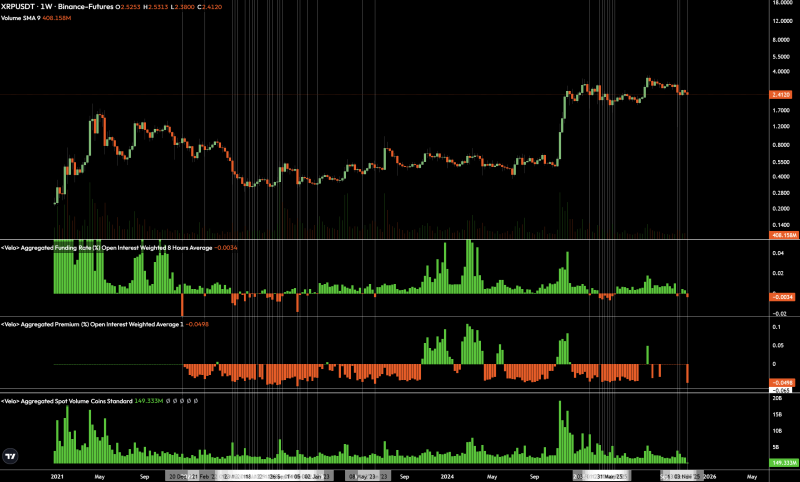XRP is flashing a familiar signal that contrarian traders know well. Funding rates in the perpetual futures market have dipped into negative territory, meaning short sellers are dominating the sentiment right now. But here's the twist: historically, this is exactly when XRP has staged some of its strongest rallies.
Why Negative Funding Matters
Market analyst Cryptoinsightuk pointed this out with a simple question—what do you notice when XRP funding turns negative? The answer, based on past cycles, might surprise the bears.

In futures trading, the funding rate shows the balance between longs and shorts. When it goes negative, short traders are essentially paying long holders—a clear sign the market expects prices to drop. For XRP, these negative funding periods have consistently marked capitulation zones where selling exhausts itself right before a rally kicks in.
The current weekly funding rate sits around -0.0034, pointing to an overcrowded short position. And if history repeats, that's not a bearish setup—it's a bullish one.
The Pattern Keeps Repeating
Looking back at XRP's weekly chart, the pattern is hard to ignore:
- Early 2021: Negative funding hit just before XRP rocketed from below $0.25 to over $1.50
- Mid-2022: Another negative phase around $0.35 marked accumulation before the token doubled
- Mid-2023: Funding turned negative again, then XRP surged past $2.00 within weeks
- Now (late 2025): Same setup—negative funding, price holding near $2.40, shorts piling in
Add in a deeply negative premium (-0.0498) and stable spot volume (149M XRP), and you've got a classic bottoming structure. Futures traders are bearish, but spot buyers aren't panicking.
If XRP holds above $2.30–$2.40, a short squeeze could push it quickly toward $2.70–$3.00. The key levels to watch are $2.38 as immediate support and $2.53 as the first resistance hurdle. A break above that could trigger a rush to $3.00.
The broader market has cooled off after XRP's big rally earlier this year, and traders are betting on further weakness. But that extreme pessimism—paired with price stability—often signals bear exhaustion rather than continuation.
 Saad Ullah
Saad Ullah

 Saad Ullah
Saad Ullah


